#Deb Cox
Explore tagged Tumblr posts
Text
“Miss Fisher & The Crypt of Tears” Q&A for Acorn TV (2020) via @/miss.fisher__ on Instagram
“Nathan and Essie, what was it like for you two, coming back together and getting back into character?”
#mfmm#essie davis#nathan page#deb cox#fiona eagger#tony tilse#does anyone… know where the rest of this interview can be seen?#i tried every single keyword i could imagine#scrolled pages of archives on acorn tv’s website… and NOTHING#i’m going a little bit insane about it#why didn’t anyone do at least ONE group cast interview back in the day?#a travesty I’ll tell ya
33 notes
·
View notes
Text
Miss Fisher enquête saison 3 de Deb Cox et Fiona Eagger
Cette saison est plus courte parce qu’on a que 8 épisodes d’enquêtes policières avec 2 épisodes qui se suivent. Un personnage tout droit sorti du passé de Miss Fisher entre en scène. Il sème la zizanie dans notre équipe gagnante.
#Deb Cox#Fiona Eagger#Le tombeau des larmes#Miss Fisher enquête#Miss Fisher enquête saison 3#série Prime Vidéo#Série télé
0 notes
Text

i’m never going to fucking shut up about this look at THEM
now I know exactly how foggy felt in season 3 when he sees matt at josie’s and asks him if this is real
pls excuse me while I scream from the rooftops
#jon being covered in blood is so on brand#they look so happy 🥹#it’s a great fucking day to be a kastle shipper#charlie looks so fucking cute in his lil beanie#deb is just an ethereal goddess as usual#jon covered and blood and cheesing is my favorite#where the fuck is elden tho#charlie cox#matt murdock#daredevil#deborah ann woll#karen page#jon bernthal#frank castle#the punisher#daredevil born again#court rambles#court is losing her fucking mind
204 notes
·
View notes
Text
I don't wanna live forever but these exchanges between Sharpe and Harper in Sharpe's Rifles added a million years to my life-






#*sobs gently*#this book made me cry#AND HOGAN IN THE END???#JESUS CHRIST ON A HORSE#can you IMAGINE THAT DUO- HUGH FRASER AND BRIAN COX????#WE WERE SO CLOSE TO PERFECTION#Sharpe's rifles#deb reads#NOW ONTO SHARPE'S HAVOC MUAHAHAHA#richard sharpe#patrick harper#daragh o'malley#sean bean#sharpe#napoleonic wars
17 notes
·
View notes
Text

LETTERS FROM AN AMERICAN
June 2, 2024
HEATHER COX RICHARDSON
JUN 03, 2024
Today is the one-hundredth anniversary of the Indian Citizenship Act, which declared that “all non-citizen Indians born within the territorial limits of the United States be, and they are hereby, declared to be citizens of the United States: Provided, That the granting of such citizenship shall not in any manner impair or otherwise affect the right of any Indian to tribal or other property.”
That declaration had been a long time coming. The Constitution, ratified in 1789, excluded “Indians not taxed” from the population on which officials would calculate representation in the House of Representatives. In the 1857 Dred Scott v. Sandford decision, the Supreme Court reiterated that Indigenous tribes were independent nations. It called Indigenous peoples equivalent to “the subjects of any other foreign Government.” They could be naturalized, thereby becoming citizens of a state and of the United States. And at that point, they “would be entitled to all the rights and privileges which would belong to an emigrant from any other foreign people.”
The Fourteenth Amendment, ratified in 1868, established that “all persons born or naturalized in the United States, and subject to the jurisdiction thereof, are citizens of the United States and of the State wherein they reside.” But it continued to exclude “Indians not taxed” from the population used to calculate representation in the House of Representatives.
In 1880, John Elk, a member of the Winnebago tribe, tried to register to vote, saying he had been living off the reservation and had renounced the tribal affiliation under which he was born. In 1884, in Elk v. Wilkins, the Supreme Court affirmed that the Fourteenth Amendment to the Constitution did not cover Indigenous Americans who were living under the jurisdiction of a tribe when they were born. In 1887 the Dawes Act provided that any Indigenous American who accepted an individual land grant could become a citizen, but those who did not remained noncitizens.
As Interior Secretary Deb Haaland pointed out today in an article in Native News Online, Elk v. Wilkins meant that when Olympians Louis Tewanima and Jim Thorpe represented the United States in the 1912 Olympic games in Stockholm, Sweden, they were not legally American citizens. A member of the Hopi Tribe, Tewanima won the silver medal for the 10,000 meter run.
Thorpe was a member of the Sac and Fox Nation, and in 1912 he won two Olympic gold medals, in Classic pentathlon—sprint hurdles, long jump, high jump, shot put, and middle distance run—and in decathlon, which added five more track and field events to the Classic pentathlon. The Associated Press later voted Thorpe “The Greatest Athlete of the First Half of the Century” as he played both professional football and professional baseball, but it was his wins at the 1912 Olympics that made him a legend. Congratulating him on his win, Sweden’s King Gustav V allegedly said, “Sir, you are the greatest athlete in the world.”
Still, it was World War I that forced lawmakers to confront the contradiction of noncitizen Indigenous Americans. According to the Gilder Lehrman Institute for American History, more than 11,000 American Indians served in World War I: nearly 5,000 enlisted and about 6,500 were drafted, making up a total of about 25% of Indigenous men despite the fact that most Indigenous men were not citizens.
It was during World War I that members of the Choctaw and Cherokee Nations began to transmit messages for the American forces in a code based in their own languages, the inspiration for the Code Talkers of World War II. In 1919, in recognition of “the American Indian as a soldier of our army, fighting on foreign fields for liberty and justice,” as General John Pershing put it, Congress passed a law to grant citizenship to Indigenous American veterans of World War I.
That citizenship law raised the question of citizenship for those Indigenous Americans who had neither assimilated nor served in the military. The non-Native community was divided on the question; so was the Native community. Some thought citizenship would protect their rights, while others worried that it would strip them of the rights they held under treaties negotiated with them as separate and sovereign nations and was a way to force them to assimilate.
On June 2, 1924, Congress passed the measure, its supporters largely hoping that Indigenous citizenship would help to clean up the corruption in the Department of Indian Affairs. The new law applied to about 125,000 people out of an Indigenous population of about 300,000.
But in that era, citizenship did not confer civil rights. In 1941, shortly after Elizabeth Peratrovich and her husband, Roy, both members of the Tlingit Nation, moved from Klawok, Alaska, to the city of Juneau, they found a sign on a nearby inn saying, “No Natives Allowed.” This, they felt, contrasted dramatically with the American uniforms Indigenous Americans were wearing overseas, and they said as much in a letter to Alaska’s governor, Ernest H. Gruening. The sign was “an outrage,” they wrote. “The proprietor of Douglas Inn does not seem to realize that our Native boys are just as willing as the white boys to lay down their lives to protect the freedom that he enjoys."
With the support of the governor, Elizabeth started a campaign to get an antidiscrimination bill through the legislature. It failed in 1943, but passed the House in 1945 as a packed gallery looked on. The measure had the votes to pass in the Senate, but one opponent demanded: "Who are these people, barely out of savagery, who want to associate with us whites with 5,000 years of recorded civilization behind us?"
Elizabeth Peratrovich had been quietly knitting in the gallery, but during the public comment period, she said she would like to be heard. She crossed the chamber to stand by the Senate president. “I would not have expected,” she said, “that I, who am barely out of savagery, would have to remind gentlemen with five thousand years of recorded civilization behind them of our Bill of Rights.” She detailed the ways in which discrimination daily hampered the lives of herself, her husband, and her children. She finished to wild applause, and the Senate passed the nation’s first antidiscrimination act by a vote of 11 to 5.
Indigenous veterans came home from World War II to discover they still could not vote. In Arizona, Maricopa county recorder Roger G. Laveen refused to register returning veterans of the Fort McDowell Yavapai Nation, including Frank Harrison, to vote. He cited an earlier court decision saying Indigenous Americans were “persons under guardianship.” They sued, and the Arizona Supreme Court agreed that the phrase only applied to judicial guardianship.
In New Mexico, Miguel Trujillo, a schoolteacher from Isleta Pueblo who had served as a Marine in World War II, sued the county registrar who refused to enroll him as a voter. In 1948, in Trujillo v. Garley, a state court agreed that the clause in the New Mexico constitution prohibiting “Indians not taxed” from voting violated the Fourteenth and Fifteenth amendments by placing a unique requirement on Indigenous Americans. It was not until 1957 that Utah removed its restrictions on Indigenous voting, the last of the states to do so.
The 1965 Voting Rights Act protected Native American voting rights along with the voting rights of all Americans, and they, like all Americans, are affected by the Supreme Court’s hollowing out of the law and the wave of voter suppression laws state legislators who have bought into Trump’s Big Lie have passed since 2021. Voter ID laws that require street addresses cut out many people who live on reservations, and lack of access to polling places cuts out others.
Katie Friel and Emil Mella Pablo of the Brennan Center noted in 2022 that, for example, people who live on Nevada’s Duckwater reservation have to travel 140 miles each way to get to the closest elections office. “As the first and original peoples of this land, we have had only a century of recognized citizenship, and we continue to face systematic barriers when exercising the fundamental and hard-fought-for right to vote,” Democratic National Committee Native Caucus chair Clara Pratte said in a press release from the Democratic Party.
As part of the commemoration of the Indian Citizenship Act, the Democratic National Committee is distributing voter engagement and protection information in Apache, Ho-Chunk, Hopi, Navajo, Paiute, Shoshone, and Zuni.
LETTERS FROM AN AMERICAN
HEATHER COX RICHARDSON
#Heather Cox Richardson#Code Talkers#Letters from an American#History#American History#Native American#voting rights#citizenship
111 notes
·
View notes
Text
Congratulations to Deb Cox and Fiona Eagger on their Screen Producer Australia Lifetime Achievement Award!
#miss fisher's murder mysteries#mfmm#miss fisher and the crypt of tears#the adventuresses’ club of the americas#phryne fisher#acorn tv#ms fisher's modern murder mysteries#peregrine fisher#everycloudproductions#every cloud productions
24 notes
·
View notes
Text
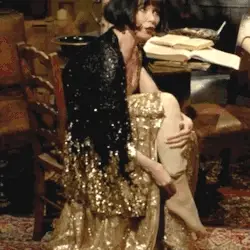




Essie Davis dans “Miss Fisher et le Tombeau des Larmes” de Tony Tilse (2020) - inspiré de “Phryne Fisher Historical Mysteries” série de romans de Kerry Greenwood (1989-2021) et reprenant la distribution de la série “Miss Fisher Enquête” créée par Deb Cox et Fiona Eagger (2012-15) - décembre 2023.
26 notes
·
View notes
Text
Heather Cox Richardson
November 29, 2024
Heather Cox Richardson
Nov 30
In 2008, Congress passed and President George W. Bush signed into law an act making the day after Thanksgiving National Native American Heritage Day.
About a month ago, on Friday, October 25, President Joe Biden became the first president to visit Indian Country in ten years when he traveled to the Gila River Indian Community in Maricopa County, Arizona, near Phoenix. Secretary of the Interior Deb Haaland traveled with him. The trip was designed to highlight the investments the Biden-Harris administration has made in Tribal Nations.
At a press gaggle on Air Force One on the way to Arizona, White House press secretary Karine Jean-Pierre noted that under Biden, Tribal Nations have seen the largest direct federal investment in history: $32 billion from the American Rescue Plan and $13 billion through the Bipartisan Infrastructure Law to build roads and bridges, bring clean water and sanitation, and build high-speed Internet in Tribal communities.
Jean-Pierre added that First Lady Jill Biden has also championed Native communities, visiting them ten times to highlight investments in youth mental health, the revitalization of Native languages, and to improve access to cancer screening and cancer care in Native communities.
Secretary Haaland, herself a member of the Pueblo of Laguna, agreed that the Biden-Harris administration has brought “transformational change” to Native communities: “electricity on the Hopi Reservation in Arizona for homes that have never had electricity; protecting cultural resources, like salmon, which Pacific Northwest Tribes have depended on for thousands of years; new transportation infrastructure for the Mescalero Apache Nation in New Mexico that will provide a safer travel route and boost their economic development, their local economy; addressing toxic legacy pollution and abandoned oil and gas infrastructure that pollutes our air and water for the Osage Nation in Oklahoma; providing clean drinking water for Fort Peck in Montana.”
“Tribal leaders are experiencing a new era,” Haaland added. “They’re at the table. They’re being consulted.”
When Biden spoke at the Gila Crossing Community School, he said he was there “to right a wrong, to chart a new path toward a better future for us all.” As president of the United States, Biden formally apologized to the Native peoples—Native Americans, Native Hawaiians, Native Alaskans—for the U.S. government policy that forced Native children into federal Indian boarding schools.
The apology comes after the release of an Interior Department study, The Federal Boarding School Initiative, that Secretary Haaland directed the department to undertake in 2021. According to Assistant Secretary of the Interior Bryan Newland, a citizen and former president of the Bay Mills Indian Community (Ojibwe), the initiative was “a comprehensive effort to recognize the troubled legacy of Federal Indian boarding school policies with the goal of addressing their intergenerational impact and to shed light on the traumas of the past.”
The initiative set out to identify federal Indian boarding schools and sites, to identify the children who attended those schools and to identify their Tribal identities, to find marked and unmarked burial sites of the remains of Indian children near school facilities, and to incorporate the viewpoints of those who attended federal Indian boarding schools and their descendants into the story of those schools.
The report looked at the Indian education system from 1819 to 1969 as a whole, bringing together federal funding for religious schools in the early 1800s with later explicitly federal schools and their public school successors during and after the 1930s. But historians generally focus on the period from 1879 to the 1930s as the boarding school era.
In 1879, the government opened the Carlisle Indian Industrial School, a boarding school for American Indian children in Carlisle, Pennsylvania, explicitly designed to separate children from their families and their culture and to train them for menial jobs.
The boarding school era was the brainchild of Army officer Richard Henry Pratt, a Civil War veteran who, in the years after the war, commanded the 10th United States Cavalry, a Black regiment stationed in the American West whose members Indigenous Americans nicknamed the “Buffalo Soldiers.” Pratt fought in the campaigns on the Plains from 1868 through 1875, when he was assigned to oversee 72 Cheyenne, Kiowa, Comanche, Arapaho, and Caddo prisoners of war at Fort Marion in St. Augustine, Florida (now known as the Castillo de San Marcos National Monument).
Many Indigenous prisoners at Fort Marion, taken from the dry Plains to the hot and humid coast of Florida where they were imprisoned in a cramped stone fort, quickly sickened and died. Pratt worked to upgrade conditions and to assimilate prisoners into U.S. systems by teaching them English, U.S. culture, Christianity, and how the American economy worked. He cut their hair, dressed them in military-type uniforms, and urged them to make art for sale to local tourists—it’s from here we get the world-famous collection of ledger art by the artists of Fort Marion—but focused on turning the former warriors and their families into menial workers.
After the Battle of the Little Bighorn in 1876 and the subsequent pursuit and surrender of leading Lakota bands throughout that year and the next, leading to the murder of Crazy Horse in 1877, popular opinion ran heavily toward simply corralling Indigenous Americans on reservations and waiting either for their assimilation or extermination. At the same time, with what seemed to be the end of the most serious of the Plains Wars, Army officers like Pratt had reason to worry that the downsizing of the U.S. Army would mean the end of their careers.
Indigenous survivors of Fort Marion returned home to see that the American government had no real plans for a thriving American Indian populace. There was little infrastructure to link them to the rest of the country to sell their art, and Indian agents rejected tribal members for jobs in favor of white cronies.
But Pratt considered his experiment at Fort Marion a great success, and he came to believe he could make his system work even more thoroughly by using a loophole in the treaties between Plains Tribes and the U.S. government to force Indigenous Americans to assimilate as children. He planned, he said, to “Kill the Indian and save the man.”
Treaties between Plains Indian Tribes and the government required the U.S. government to educate American Indian children—something their parents cared deeply about—but the treaties didn’t actually specify where the schools would be. So Pratt convinced the U.S. Army and officials at the Interior Department to give him the use of the Carlisle Barracks to open an industrial school, designed to teach American Indian children the skills necessary to be servants and menial workers.
In summer 1879, Pratt traveled to western reservations of the Lakotas and Dakotas, primarily, to gather up 82 children to begin his experiment in annihilating their culture from their minds. He forbade the practice of any aspect of Indigenous culture—language, religion, custom, clothing—and forced children to change their names, use English, practice Christianity, and wear clothing that mirrored that of Euro-American children.
Crowded together, many children died of disease; bereft of their family and culture, many died of heartache. Some found their newfound language and lessons tolerable, others ran away. For the next fifty years, the Carlisle model was the central model of government education for Indigenous children, with tens of thousands of children educated according to its methods.
In the 1920s the Institute for Government Research, later renamed the Brookings Institution, commissioned a study funded by the Rockefeller Institute—to make sure it would not reflect government bias—to investigate conditions among Indigenous Americans.
In 1928 that study, called the Meriam Report, condemned the conditions under which American Indians lived. It also emphasized the “deplorable health conditions” at the boarding schools, condemned the schools’ inappropriate focus on menial skills, and asserted that “[t]he most fundamental need in Indian education is a change in point of view.” In 1934 the Indian Reorganization Act reversed the policy of trying to eradicate Tribal cultures through boarding children away from their families, and introduced the teaching of Indian history and culture in federal schools.
But the boarding schools remain a central part of the experience of American Indians since the establishment of the U.S. government in North America, and the Federal Boarding School Initiative recommended that “[t]he U.S. Government should issue a formal acknowledgment of its role in adopting a national policy of forced assimilation of Indian children, and carrying out this policy through the removal and confinement of Indian children from their families and Indian Tribes and the Native Hawaiian Community and placement in the Federal Indian boarding school system.”
It continued: "The United States should accompany this acknowledgment with a formal apology to the individuals, families, and Indian Tribes that were harmed by U.S. policy."
On October 25, 2024, President Joe Biden delivered that apology.
—
2 notes
·
View notes
Text
The Gilded Age's Broadway Divas: Miss Armstrong (Debra Monk)
Sometimes, a work family is a German mother and her Irish daughter, an English father and his clockmaking son, and a mean old spinster aunt who's only invited to the family holiday parties because she'd bitch for weeks if she wasn't. Miss Armstrong is Agnes's nasty lady's maid who has said exactly one (1) nice thing all season. And I love her.
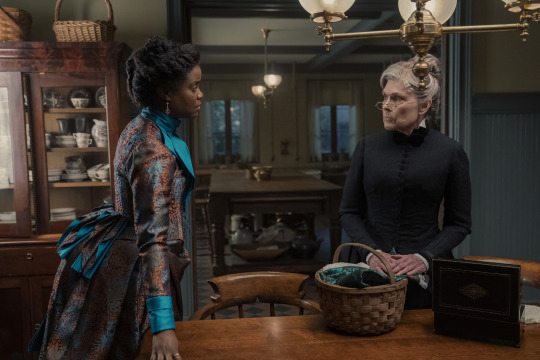
At seventy-four, Debra Monk is the oldest woman on The Gilded Age, and the only one with the appropriate hair color to show it. As cantankerous as her mistress with none of the charm, Armstrong is nothing like her fantastic actress. Debra Monk is one of theatre's comedy greats. Much like Katie Finneran, Debra is playing against type. Us theatre buffs know her from Pump Boys and Dinettes (co-author, director, and actress), Company (Joanne), and the ill-fated Nick & Nora alongside Christine Baranski.
An absolute delight of a human being, Deb Monk is a wise-cracking mile-a-minute, raunchy, jokester and deserves praise and recognition for her work.
#1: "Everybody's Girl," (Steel Pier) - My Favorite Broadway: The Leading Ladies (1998)
youtube
Almost every stalwart theatre Diva has her signature song. "Everybody's Girl" is Debra Monk's pride and joy, and she sings it to this day. At her raunchiest yet, she serenades a gleeful audience with her sexual exploits whilst dressed in a black dress and corset that Armstrong would have a coronary over.
The clever lyrics are perfectly paired with her comedic chops. The whole performance is just a delight from start to finish. That exit has me screaming every time. Her performance in the stage show the song originated from netted her a third Tony nomination.
If we do not get a clip of Debra Monk in full Armstrong drag singing this song, what is the point anymore?
#2: "The Ladies Who Lunch," Company (1995)
youtube
Before there was Patti LuPone, but after the great Elaine Stritch, there was Debra Monk as Joanne in the 1995 first Broadway revival of Company. Yes, another Stephen Sondheim. Often forgotten in the Company conversation, this production had a tough act to follow. Nominated for just two Tonys (Best Revival and Best Featured Actress--Veanne Cox, hello, I love you), there's not much that can be said about the 1995 production. It lasted two months, and no one can point me in the direction of any footage with Debra, so here we are.
#3: Debra Monk's Birthday Bash: Totally Hot and a Little Dirty (2014)
youtube
For her 65th birthday, Debra performed in a raucous and raunchy concert to benefit Broadway Cares/Equity Fights Aids. The concert raised an impressive $140,355 for the charity, and featured a eclectic mix of rock 'n' roll, church music, and debauchery. Well, what else would you expect from Debra Monk?
As comfortable flirting with younger men as she is grinding up against scantily clad fellow comedienne Andrea Martin and Company co-star Charlotte d'Amboise, Debra is a riot from start to finish.
The entire show is available on DVD from BC/EFA, and I need it.
#4: "Ohio Afternoon," Oil City Symphony (1987)
youtube
Performed as part of the "If It Only Runs a Minute" series that highlights really obscure shows that barely had a life, Debra reprised her drum-playing role in 2012. As if she didn't have enough talents. Only she could take drums and make it peak comedy.
#5: Game Night at Seth Rudetsky's Place
youtube
No explanation needed. Hello, Andrea Martin. Love you.
LINK TO MASTERPOST
#the gilded age#armstrong (the gilded age)#debra monk#company 1995#sondheim#everybody's girl#steel pier#broadway#musical theatre
10 notes
·
View notes
Text
Princeton University Presidential Straw Poll, October 21, 1920
Harding: 877 Cox: 464 Debs: 9 Watkins: 9 Christiansen: 5 (Source)
#On This Day#1920s#presidential election#poll#Princeton#Warren G. Harding#James M. Cox#PrincetonU#Princeton University
2 notes
·
View notes
Text
November 29, 2024
HEATHER COX RICHARDSON
NOV 30
In 2008, Congress passed and President George W. Bush signed into law an act making the day after Thanksgiving National Native American Heritage Day.
About a month ago, on Friday, October 25, President Joe Biden became the first president to visit Indian Country in ten years when he traveled to the Gila River Indian Community in Maricopa County, Arizona, near Phoenix. Secretary of the Interior Deb Haaland traveled with him. The trip was designed to highlight the investments the Biden-Harris administration has made in Tribal Nations.
At a press gaggle on Air Force One on the way to Arizona, White House press secretary Karine Jean-Pierre noted that under Biden, Tribal Nations have seen the largest direct federal investment in history: $32 billion from the American Rescue Plan and $13 billion through the Bipartisan Infrastructure Law to build roads and bridges, bring clean water and sanitation, and build high-speed Internet in Tribal communities.
Jean-Pierre added that First Lady Jill Biden has also championed Native communities, visiting them ten times to highlight investments in youth mental health, the revitalization of Native languages, and to improve access to cancer screening and cancer care in Native communities.
Secretary Haaland, herself a member of the Pueblo of Laguna, agreed that the Biden-Harris administration has brought “transformational change” to Native communities: “electricity on the Hopi Reservation in Arizona for homes that have never had electricity; protecting cultural resources, like salmon, which Pacific Northwest Tribes have depended on for thousands of years; new transportation infrastructure for the Mescalero Apache Nation in New Mexico that will provide a safer travel route and boost their economic development, their local economy; addressing toxic legacy pollution and abandoned oil and gas infrastructure that pollutes our air and water for the Osage Nation in Oklahoma; providing clean drinking water for Fort Peck in Montana.”
“Tribal leaders are experiencing a new era,” Haaland added. “They’re at the table. They’re being consulted.”
When Biden spoke at the Gila Crossing Community School, he said he was there “to right a wrong, to chart a new path toward a better future for us all.” As president of the United States, Biden formally apologized to the Native peoples—Native Americans, Native Hawaiians, Native Alaskans—for the U.S. government policy that forced Native children into federal Indian boarding schools.
The apology comes after the release of an Interior Department study, The Federal Boarding School Initiative, that Secretary Haaland directed the department to undertake in 2021. According to Assistant Secretary of the Interior Bryan Newland, a citizen and former president of the Bay Mills Indian Community (Ojibwe), the initiative was “a comprehensive effort to recognize the troubled legacy of Federal Indian boarding school policies with the goal of addressing their intergenerational impact and to shed light on the traumas of the past.”
The initiative set out to identify federal Indian boarding schools and sites, to identify the children who attended those schools and to identify their Tribal identities, to find marked and unmarked burial sites of the remains of Indian children near school facilities, and to incorporate the viewpoints of those who attended federal Indian boarding schools and their descendants into the story of those schools.
The report looked at the Indian education system from 1819 to 1969 as a whole, bringing together federal funding for religious schools in the early 1800s with later explicitly federal schools and their public school successors during and after the 1930s. But historians generally focus on the period from 1879 to the 1930s as the boarding school era.
In 1879, the government opened the Carlisle Indian Industrial School, a boarding school for American Indian children in Carlisle, Pennsylvania, explicitly designed to separate children from their families and their culture and to train them for menial jobs.
The boarding school era was the brainchild of Army officer Richard Henry Pratt, a Civil War veteran who, in the years after the war, commanded the 10th United States Cavalry, a Black regiment stationed in the American West whose members Indigenous Americans nicknamed the “Buffalo Soldiers.” Pratt fought in the campaigns on the Plains from 1868 through 1875, when he was assigned to oversee 72 Cheyenne, Kiowa, Comanche, Arapaho, and Caddo prisoners of war at Fort Marion in St. Augustine, Florida (now known as the Castillo de San Marcos National Monument).
Many Indigenous prisoners at Fort Marion, taken from the dry Plains to the hot and humid coast of Florida where they were imprisoned in a cramped stone fort, quickly sickened and died. Pratt worked to upgrade conditions and to assimilate prisoners into U.S. systems by teaching them English, U.S. culture, Christianity, and how the American economy worked. He cut their hair, dressed them in military-type uniforms, and urged them to make art for sale to local tourists—it’s from here we get the world-famous collection of ledger art by the artists of Fort Marion—but focused on turning the former warriors and their families into menial workers.
After the Battle of the Little Bighorn in 1876 and the subsequent pursuit and surrender of leading Lakota bands throughout that year and the next, leading to the murder of Crazy Horse in 1877, popular opinion ran heavily toward simply corralling Indigenous Americans on reservations and waiting either for their assimilation or extermination. At the same time, with what seemed to be the end of the most serious of the Plains Wars, Army officers like Pratt had reason to worry that the downsizing of the U.S. Army would mean the end of their careers.
Indigenous survivors of Fort Marion returned home to see that the American government had no real plans for a thriving American Indian populace. There was little infrastructure to link them to the rest of the country to sell their art, and Indian agents rejected tribal members for jobs in favor of white cronies.
But Pratt considered his experiment at Fort Marion a great success, and he came to believe he could make his system work even more thoroughly by using a loophole in the treaties between Plains Tribes and the U.S. government to force Indigenous Americans to assimilate as children. He planned, he said, to “Kill the Indian and save the man.”
Treaties between Plains Indian Tribes and the government required the U.S. government to educate American Indian children—something their parents cared deeply about—but the treaties didn’t actually specify where the schools would be. So Pratt convinced the U.S. Army and officials at the Interior Department to give him the use of the Carlisle Barracks to open an industrial school, designed to teach American Indian children the skills necessary to be servants and menial workers.
In summer 1879, Pratt traveled to western reservations of the Lakotas and Dakotas, primarily, to gather up 82 children to begin his experiment in annihilating their culture from their minds. He forbade the practice of any aspect of Indigenous culture—language, religion, custom, clothing—and forced children to change their names, use English, practice Christianity, and wear clothing that mirrored that of Euro-American children.
Crowded together, many children died of disease; bereft of their family and culture, many died of heartache. Some found their newfound language and lessons tolerable, others ran away. For the next fifty years, the Carlisle model was the central model of government education for Indigenous children, with tens of thousands of children educated according to its methods.
In the 1920s the Institute for Government Research, later renamed the Brookings Institution, commissioned a study funded by the Rockefeller Institute—to make sure it would not reflect government bias—to investigate conditions among Indigenous Americans.
In 1928 that study, called the Meriam Report, condemned the conditions under which American Indians lived. It also emphasized the “deplorable health conditions” at the boarding schools, condemned the schools’ inappropriate focus on menial skills, and asserted that “[t]he most fundamental need in Indian education is a change in point of view.” In 1934 the Indian Reorganization Act reversed the policy of trying to eradicate Tribal cultures through boarding children away from their families, and introduced the teaching of Indian history and culture in federal schools.
But the boarding schools remain a central part of the experience of American Indians since the establishment of the U.S. government in North America, and the Federal Boarding School Initiative recommended that “[t]he U.S. Government should issue a formal acknowledgment of its role in adopting a national policy of forced assimilation of Indian children, and carrying out this policy through the removal and confinement of Indian children from their families and Indian Tribes and the Native Hawaiian Community and placement in the Federal Indian boarding school system.”
It continued: "The United States should accompany this acknowledgment with a formal apology to the individuals, families, and Indian Tribes that were harmed by U.S. policy."
On October 25, 2024, President Joe Biden delivered that apology.
—
0 notes
Text
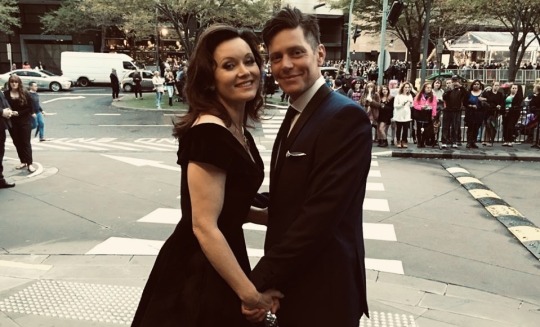


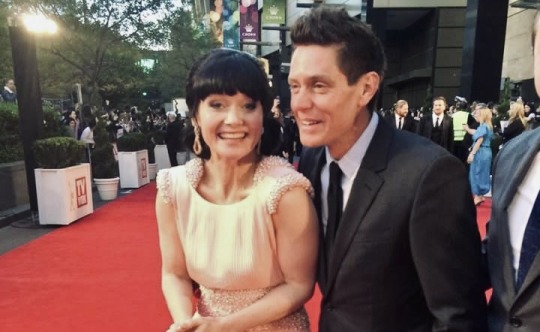
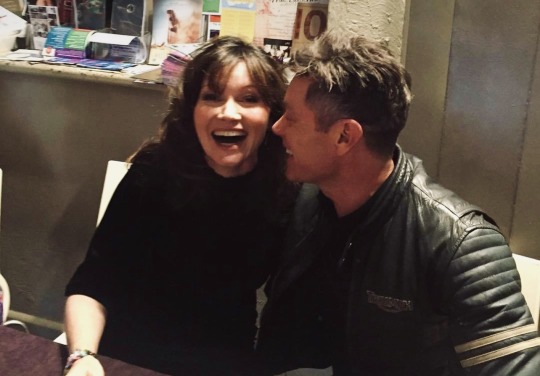
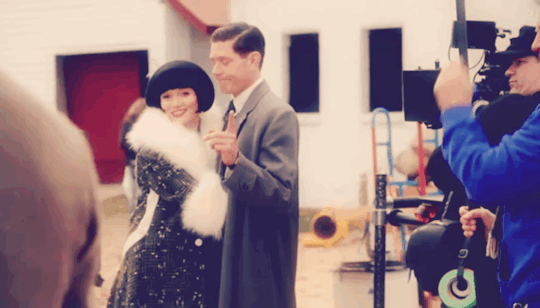


Nathan Page & Essie Davis - ☀️🌙 Work Besties
- “The love for Phryne Fisher and her relationship with Detective Inspector Jack Robinson is kind of mind-blowingly profound. Nathan (Page) and I were treated almost like The Beatles and the kind of joy that we have created in a lot of people’s lives is really a phenomenon.” - Essie Davis
- “I think that with the rich and honest relationship that Nathan and I have built between Jack and Phryne, we have created a fantastic, lose-yourself-in-it experience.” - Essie Davis
- “[On what originally attracted him to playing the role of Jack] A number of things. I think the number one reason would be to work alongside Essie. I've worked with Essie before on stage. We did the Scottish play together at the state theater in South Australia many years ago - and ironically her husband Justin Kurzel just directed a Macbeth feature film with Michael Fassbender! - but yeah, Essie was probably number one. In the audition process, you don’t always know who’s up for what, and of prime importance is getting your casting right in order to get the chemistry right. So, because I knew Ess, when we did the final audition it was… I don’t wanna say ‘perfect’, but it was a breeze because we’re just… naughty together. And so there’s that natural chemistry. She’s an incredibly naughty, vibrant human and I’m… easily led, I guess. [laughs]” - Nathan Page
- “We had Essie and Nathan back together again doing Jack and Phryne and they just got back on that horse like they'd never left it. Their banter is great and watching them relate, you can see they really are the heart of the film. It was great having them and that chemistry back.” - Deb Cox, writer for “Miss Fisher’s Murder Mysteries” & “Crypt of Tears”
- “We always cannot stop laughing when we are together. No matter how frustrating or hard working we all had to be, it was always filled with love, joy and silliness.” - Essie Davis
- “It was pretty easy because I get to work with Essie Davis, there are no problems we love each other wonderfully so it’s so easy.” - Nathan Page
- “It’s amazing how well I feel like I know Phryne and in the creation of this, it was just a joy to step back into her shoes, and to have the delightful Nathan Page to play with…” - Essie Davis
- “I think for me personally, you whack on one of those twenties, three-piece suits, and it already corrects your posture somewhat, but the actual play that I get to do with this one [Essie] is, that’s all the joy, that’s all the gold, all the fun. And that just comes… naturally.” - Nathan Page
#mfmm#essie davis#nathan page#listen… it just makes things all the more enjoyable when you know actors actually enjoy each other’s company#plenty of us have that co-worker where you just get each other & they’re easy to be around & they keep you sane#one of the tightest bonds tbh lol#them but x100
210 notes
·
View notes
Text
Miss Fisher S2 de Deb Cox et Fiona Eagger

View On WordPress
#Deb Cox#Fiona Eagger#Miss Fisher enquête#Miss Fisher enquête saison 2#prime vidéo#série policière#série Prime Vidéo#Série télé
0 notes
Text
May 20th Prayer Requests
Deb Penesten - Heart Cath today.
Margaret Cox - Health.
0 notes
Text
映画 『ティーンエイジ』 あらすじ (2013/U.S.A/Press Noteより抜粋)
2023年12月24日(日)大阪・中崎町のプラネット・プラス・ワンさんと、12月26日(火)東京・阿佐ヶ谷のTABASAさんにて各会場1度きりの特別上映会をします。
1904年から1945年の間に発明された 「ティーンエイジ」 という言葉や概念の起源を記したイギリスの音楽ライター、ジョン・サヴァージの著書 『ティーンエイジ』 を基に、マット・ウルフ監督が当時の手法で再撮影し、実際のアーカイブのように再現した映像と過去の記録映像を融合させたコラージュのような有機的な映像美、映画中ずっと流れている膨大な現代音楽、そのサウンドスケープは映画をレコードのように聞く事ができナレーションを歌詞のように聞く事もできる、観ている人たちの中に流れ込んでくるような音楽的な体験になるよう意図して作られた作品です。
とても素敵な映画で過去のフッテージを丁寧に掘り下げた資料としても貴重な今作 『ティーンエイジ』 ですが、日本語での情報があまりない作品ですので、マット・ウルフ監督の過去のインタビューやプレスリリースより抜粋させていただき、観に来てくださった方がより映画を楽しめるように少しだけ紹介したいと思います。
youtube
*動画はグッチーズ・フリースクール様よりお借りしています。
"It Girl" と呼ばれたブレンダ・ディーン・ポール
(あらすじ)
「ティーンエイジャー」 が発明される前は人生の第2期は存在せず、子供であるか大人として働くかのどちらかしか無かった。時代は変わり児童労働は終わりを告げ「思春期」が出現し、大人と若者の間で闘争が勃発した。若者達は管理され規制されるのか、それとも自由になれるのか?
パンク作家ジョン・サヴェージの著書にインスパイアされた 『ティーンエイジ』 はアメリカ、イギリス、ドイツの20世紀前半の若者達の声を伝える。パーティー狂いのフラッパーズやヒップなスウィング・キッズから熱狂的なナチス・ユース、サブデブまで、第二次世界大戦が終わる頃、彼らはみな若者達の新しい概念である 「ティーンエイジャー」 だった。
4���の若い声、ジェナ・マローン、ベン・ウィショー、ジュリア・ハマー、ジェシー・アッシャーが、自己破壊的なブレンダ・ディーン・ポール、理想主義のヒトラー・ユース、メリタ・マッシュマン、反抗的なジャーマン・スウィング・キッズ、トミー・シール、そして黒人ボーイスカウトのウォーレン・ウォール、歴史上象徴的な存在のティーンエイジャー達のポートレイトにナレーションとして命を吹き込み、この生きたコラージュはブラッドフォード・コックスの現代的な音楽によって彩られている。
『ティーンエイジ』 は今日の若者文化への前奏曲という始まりで終わる物語である。どの世代においても大人達はしばしば若者達の不穏さや揺らぎを一過性の感情だと勘違いする。しかし、反逆的なティーンエイジャー達はただ単に彼らの自立を主張していただけでなく、ちゃんと未来を切り拓いている事を歴史は証明している。
Before the 'Teenager' was invented, there was no second stage of life. You were either a child or you went to work as an adult. At the turn of the century, child labor was ending, 'adolescence' was emerging, and a struggle erupted between adults and youth. Would the young be controlled and regimented, or could they be free?
Inspired by punk author Jon Savage's book, 'Teenage' gives voice to young people from the first half of the 20th century in America, England, and Germany-from party-crazed Flappers and hip Swing Kids to zealous Nazi Youth and frenzied Sub-Debs. By the end of World War Ⅱ, they were all 'Teenagers' a new idea of youth.
Four young voices (Jena Malone, Ben Whishaw, Julia Hummer, Jessie Usher) bring to life rare archival material and filmed portraits of emblematic teenagers from history, Dean Paul, a self-destructive; Bright Young Thing; Melita Maschmann, an idealistic Hitler Youth; Tommie Scheel, a rebellious German Swing Kid; and Warren Wall, a black Boy Scout. This living collage is punctuated by a contemporary score by Bradford Cox (Deerhunter/Atlas Sound).
Teenage is a story that ends with a beginning: a prelude to today's youth culture. In each generation, adults often mistake youthful unrest for an emotional right of passage. But history proves that rebelling teenagers aren't just claiming their independence, they're shaping the future.
0 notes
Text

LETTERS FROM AN AMERICAN
November 29, 2024
Heather Cox Richardson
Nov 30, 2024
In 2008, Congress passed and President George W. Bush signed into law an act making the day after Thanksgiving National Native American Heritage Day.
About a month ago, on Friday, October 25, President Joe Biden became the first president to visit Indian Country in ten years when he traveled to the Gila River Indian Community in Maricopa County, Arizona, near Phoenix. Secretary of the Interior Deb Haaland traveled with him. The trip was designed to highlight the investments the Biden-Harris administration has made in Tribal Nations.
At a press gaggle on Air Force One on the way to Arizona, White House press secretary Karine Jean-Pierre noted that under Biden, Tribal Nations have seen the largest direct federal investment in history: $32 billion from the American Rescue Plan and $13 billion through the Bipartisan Infrastructure Law to build roads and bridges, bring clean water and sanitation, and build high-speed Internet in Tribal communities.
Jean-Pierre added that First Lady Jill Biden has also championed Native communities, visiting them ten times to highlight investments in youth mental health, the revitalization of Native languages, and to improve access to cancer screening and cancer care in Native communities.
Secretary Haaland, herself a member of the Pueblo of Laguna, agreed that the Biden-Harris administration has brought “transformational change” to Native communities: “electricity on the Hopi Reservation in Arizona for homes that have never had electricity; protecting cultural resources, like salmon, which Pacific Northwest Tribes have depended on for thousands of years; new transportation infrastructure for the Mescalero Apache Nation in New Mexico that will provide a safer travel route and boost their economic development, their local economy; addressing toxic legacy pollution and abandoned oil and gas infrastructure that pollutes our air and water for the Osage Nation in Oklahoma; providing clean drinking water for Fort Peck in Montana.”
“Tribal leaders are experiencing a new era,” Haaland added. “They’re at the table. They’re being consulted.”
When Biden spoke at the Gila Crossing Community School, he said he was there “to right a wrong, to chart a new path toward a better future for us all.” As president of the United States, Biden formally apologized to the Native peoples—Native Americans, Native Hawaiians, Native Alaskans—for the U.S. government policy that forced Native children into federal Indian boarding schools.
The apology comes after the release of an Interior Department study, The Federal Boarding School Initiative, that Secretary Haaland directed the department to undertake in 2021. According to Assistant Secretary of the Interior Bryan Newland, a citizen and former president of the Bay Mills Indian Community (Ojibwe), the initiative was “a comprehensive effort to recognize the troubled legacy of Federal Indian boarding school policies with the goal of addressing their intergenerational impact and to shed light on the traumas of the past.”
The initiative set out to identify federal Indian boarding schools and sites, to identify the children who attended those schools and to identify their Tribal identities, to find marked and unmarked burial sites of the remains of Indian children near school facilities, and to incorporate the viewpoints of those who attended federal Indian boarding schools and their descendants into the story of those schools.
The report looked at the Indian education system from 1819 to 1969 as a whole, bringing together federal funding for religious schools in the early 1800s with later explicitly federal schools and their public school successors during and after the 1930s. But historians generally focus on the period from 1879 to the 1930s as the boarding school era.
In 1879, the government opened the Carlisle Indian Industrial School, a boarding school for American Indian children in Carlisle, Pennsylvania, explicitly designed to separate children from their families and their culture and to train them for menial jobs.
The boarding school era was the brainchild of Army officer Richard Henry Pratt, a Civil War veteran who, in the years after the war, commanded the 10th United States Cavalry, a Black regiment stationed in the American West whose members Indigenous Americans nicknamed the “Buffalo Soldiers.” Pratt fought in the campaigns on the Plains from 1868 through 1875, when he was assigned to oversee 72 Cheyenne, Kiowa, Comanche, Arapaho, and Caddo prisoners of war at Fort Marion in St. Augustine, Florida (now known as the Castillo de San Marcos National Monument).
Many Indigenous prisoners at Fort Marion, taken from the dry Plains to the hot and humid coast of Florida where they were imprisoned in a cramped stone fort, quickly sickened and died. Pratt worked to upgrade conditions and to assimilate prisoners into U.S. systems by teaching them English, U.S. culture, Christianity, and how the American economy worked. He cut their hair, dressed them in military-type uniforms, and urged them to make art for sale to local tourists—it’s from here we get the world-famous collection of ledger art by the artists of Fort Marion—but focused on turning the former warriors and their families into menial workers.
After the Battle of the Little Bighorn in 1876 and the subsequent pursuit and surrender of leading Lakota bands throughout that year and the next, leading to the murder of Crazy Horse in 1877, popular opinion ran heavily toward simply corralling Indigenous Americans on reservations and waiting either for their assimilation or extermination. At the same time, with what seemed to be the end of the most serious of the Plains Wars, Army officers like Pratt had reason to worry that the downsizing of the U.S. Army would mean the end of their careers.
Indigenous survivors of Fort Marion returned home to see that the American government had no real plans for a thriving American Indian populace. There was little infrastructure to link them to the rest of the country to sell their art, and Indian agents rejected tribal members for jobs in favor of white cronies.
But Pratt considered his experiment at Fort Marion a great success, and he came to believe he could make his system work even more thoroughly by using a loophole in the treaties between Plains Tribes and the U.S. government to force Indigenous Americans to assimilate as children. He planned, he said, to “Kill the Indian and save the man.”
Treaties between Plains Indian Tribes and the government required the U.S. government to educate American Indian children—something their parents cared deeply about—but the treaties didn’t actually specify where the schools would be. So Pratt convinced the U.S. Army and officials at the Interior Department to give him the use of the Carlisle Barracks to open an industrial school, designed to teach American Indian children the skills necessary to be servants and menial workers.
In summer 1879, Pratt traveled to western reservations of the Lakotas and Dakotas, primarily, to gather up 82 children to begin his experiment in annihilating their culture from their minds. He forbade the practice of any aspect of Indigenous culture—language, religion, custom, clothing—and forced children to change their names, use English, practice Christianity, and wear clothing that mirrored that of Euro-American children.
Crowded together, many children died of disease; bereft of their family and culture, many died of heartache. Some found their newfound language and lessons tolerable, others ran away. For the next fifty years, the Carlisle model was the central model of government education for Indigenous children, with tens of thousands of children educated according to its methods.
In the 1920s the Institute for Government Research, later renamed the Brookings Institution, commissioned a study funded by the Rockefeller Institute—to make sure it would not reflect government bias—to investigate conditions among Indigenous Americans.
In 1928 that study, called the Meriam Report, condemned the conditions under which American Indians lived. It also emphasized the “deplorable health conditions” at the boarding schools, condemned the schools’ inappropriate focus on menial skills, and asserted that “[t]he most fundamental need in Indian education is a change in point of view.” In 1934 the Indian Reorganization Act reversed the policy of trying to eradicate Tribal cultures through boarding children away from their families, and introduced the teaching of Indian history and culture in federal schools.
But the boarding schools remain a central part of the experience of American Indians since the establishment of the U.S. government in North America, and the Federal Boarding School Initiative recommended that “[t]he U.S. Government should issue a formal acknowledgment of its role in adopting a national policy of forced assimilation of Indian children, and carrying out this policy through the removal and confinement of Indian children from their families and Indian Tribes and the Native Hawaiian Community and placement in the Federal Indian boarding school system.”
It continued: "The United States should accompany this acknowledgment with a formal apology to the individuals, families, and Indian Tribes that were harmed by U.S. policy."
On October 25, 2024, President Joe Biden delivered that apology.
LETTERS FROM AN AMERICAN
HEATHER COX RICHARDSON
#Heather Cox Richardson#Letters From An American#American History#native Americans#American Indians#Federal Boarding School Initiative#Indian Children#Indian Reorganization Act#American Heritage Day
14 notes
·
View notes